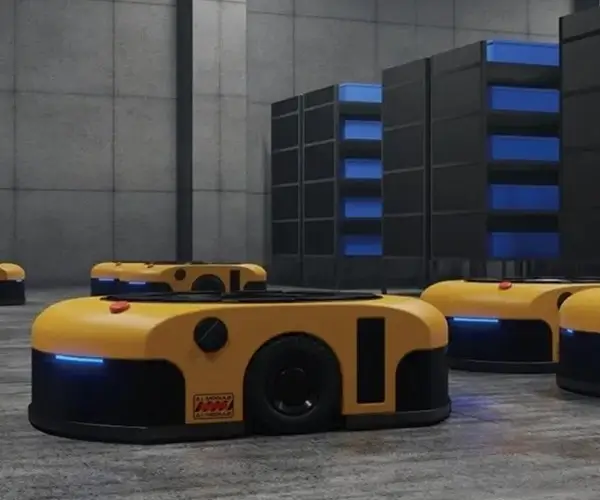Imagine a world where machines move exactly how you want—precise, responsive, and tailored to your needs. From robotic arms delicately assembling tiny components to automated curtains opening on command, the backbone of these innovations often begins with a simple yet powerful component: the servomotor. And when paired with Arduino, one of the most popular open-source microcontrollers, controlling such precise movement becomes a straightforward, gratifying experience. Whether you are a hobbyist, educator, or aspiring engineer, learning how to program a servomotor with Arduino opens endless possibilities for innovation.

What Is a Servomotor and Why Use It?
Before delving into programming, it’s essential to understand what a servomotor actually is. Unlike regular DC motors that spin freely, a servomotor is designed to reach a specific position or maintain a particular angle. It incorporates a built-in feedback mechanism, often a potentiometer, which allows precise control over its position. This makes it ideal for tasks that require accurate movement, such as steering a robotic arm, controlling a camera’s angle, or creating interactive art installations.
Servomotors are widely available, affordable, and versatile. They come in various sizes, torque capacities, and control specifications, making them suitable for a broad range of applications. When connected to an Arduino, the combination allows you to create mechanisms that respond to commands, sensors, or user input with pinpoint accuracy.
The Basics of Controlling a Servomotor
Controlling a servomotor with Arduino involves sending it a specific pulse width modulated (PWM) signal, which corresponds to predetermined angular positions. The standard servo expects signals ranging from 1 millisecond (ms) to 2 ms, corresponding to 0° to 180° rotation. Arduino’s PWM pins can generate signals within this range, but managing these signals manually can be cumbersome. That’s where Arduino libraries come into play—they simplify the process enormously.
Essential Components for Your Arduino Servomotor Project
To begin, you’ll need some basic components:
Arduino board: Uno, Mega, Nano, or any compatible microcontroller. Servomotor: Standard hobby servo like the SG90 or MG995. Power supply: For most small servos, a 5V power source is sufficient. Connecting wires: Jumper wires to link components. Breadboard (optional): For prototyping connections. Resistors and other discrete components (if needed): Depending on your setup.
Connecting the Servomotor to Arduino
Power and Ground: Connect the servo's power pin to the Arduino’s 5V pin and the ground pin to the Arduino GND. For larger servos or multiple servos, it might be wise to use an external power supply to avoid overloading the Arduino's onboard regulator.
Control Signal: Connect the servo’s signal (data) pin to a PWM-capable digital pin on Arduino—commonly pin 9 or 10.
Ground Commonality: Ensure that the Arduino's GND and the power supply ground are connected. This shared ground reference is vital for accurate communication.
Once the hardware setup is complete, you're ready to code.
Programming Your Servomotor with Arduino: The Journey Begins
Arduino's simplicity is what makes it so attractive—especially for those just starting out. The standard library for servo control is called Servo.h, which abstracts away the complexities of signal generation.
Here's a quick glance at a basic code snippet:
#include Servo myServo; void setup() { myServo.attach(9); // Attaches the servo on pin 9 to the servo object } void loop() { myServo.write(0); // Move servo to 0 degrees delay(1000); // Wait for 1 second myServo.write(90); // Move servo to 90 degrees delay(1000); myServo.write(180); // Move servo to 180 degrees delay(1000); }
This simple sketch moves a servo back and forth between its three primary positions, demonstrating the ease of controlling movements with just a few commands.
Fine-Tuning Your Servo Movements
To achieve smoother and more precise control, consider using functions like writeMicroseconds(), which give you more granular command options by specifying pulse widths directly (typically between 1000 and 2000 microseconds).
For example:
myServo.writeMicroseconds(1500); // Moves to approximately 90 degrees
Adjusting the delay times can help in creating more natural movements or slow transitions, vital for applications like animatronics or delicate manipulations.
Challenges in Servo Control and Solutions
While controlling a servo is seemingly simple, challenges can arise:
Power Issues: Servos can draw significant current, especially under load. Using an external power supply helps prevent brownouts or resets.
Timing Conflicts: When running multiple servos, timing can become complicated. Libraries like Servo.h are optimized for single or few servos but may struggle with many. Specialized libraries or hardware solutions may be necessary for complex projects.
Accuracy and Repeatability: Repeated movements might produce slight variations. Proper calibration and high-quality servos can mitigate this.
Practical Applications: Making the Most of Your Servo-Programming Skills
Once comfortable with basic control, you can expand into fascinating projects:
Robotics: Building a robotic arm with multiple degrees of freedom. Art Installations: Creating moving sculptures that respond to sensors or music. Camera Gimbals: Stabilizing and controlling camera angles. Automated Systems: Opening/closing doors, switching valves, or adjusting vents.
Planning Your Project
Before diving into code, consider these questions:
What range of motion do I need? (0–180°, continuous rotation) How precise does the movement need to be? Will my servo be under load? Do I need a more robust model? How many servos will I control simultaneously? What power supply is suitable for my setup?
Taking time to answer these questions helps prevent future frustrations and ensures your project’s success.
Let's pause here for now. In the next part, we’ll explore more complex control techniques, integrating sensors for autonomous movement, and troubleshooting common issues to elevate your Arduino servo projects to the next level.
Leveraging innovations in modular drive technology, Kpower integrates high-performance motors, precision reducers, and multi-protocol control systems to provide efficient and customized smart drive system solutions.




































